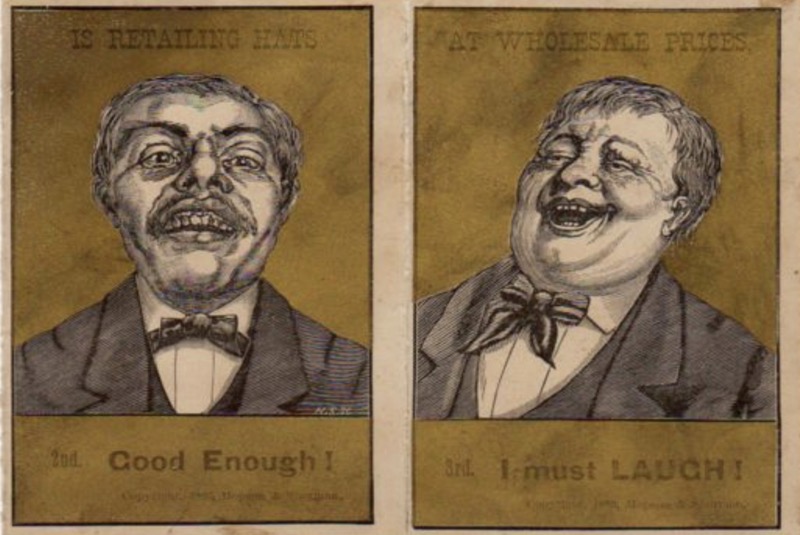Laughter is an everyday reminder that we humans are animals. In fact, when recorded laughter is slowed down, listeners can’t tell whether the sound is from a person or an animal.
We throw our heads back and bare our teeth in a monkeylike grin. Sometimes we double over and lose our ability to speak for a moment, reverting temporarily to hooting apes. And just as hoots and howls help strengthen bonds in a troop of primates or a pack of wolves, laughter helps us connect with others.
Laughter is evolutionarily ancient. Known as a “play signal,” mammalian laughter accompanies playful interactions to signal harmless intentions and keep the play going. Chimps laugh. Rats laugh. Dogs laugh. Perhaps even dolphins laugh.
And laughter is an essential feature of human social interactions. We laugh when we’re amused, of course. But we also laugh out of embarrassment, politeness, nervousness and derision.
I’m a psychology researcher who studies how people use laughter to connect, and sometimes disconnect, with others. For humans, laughter has expanded from its original function as a play signal to serve a variety of social functions.
Laughter smooths social interactions
Amused laughter is a response to what scholars of humor call a “benign violation” – a situation that could represent a threat but that the laughing person has concluded is safe. (Psychologists love to ruin good things like comedy by overexplaining them.)
Laughter is a way to communicate that an interaction is playful, harmless and unserious. It’s often not a reliable sign that a person is having a good time, even though people sometimes laugh when they are enjoying themselves. An awkward exchange, a misunderstanding, a mocking joke – all these potentially uncomfortable moments are smoothed over by laughter.
My colleagues and I were curious about whether the tendency to laugh is a trait that is consistent for each person regardless of context or whether it depends on whom they’re interacting with. In one study, we had people talk to 10 strangers in a series of one-on-one conversations. Then we counted how many times they laughed.
To our surprise, we found that how often a person laughs – at least when talking to strangers – is fairly consistent. Some people are laughers, and others are not. Whom they were talking to didn’t have a strong effect. At least in our sample, there weren’t hilarious partners who made everyone they talked to laugh.
We found that the people who tended to laugh more enjoyed the conversations less. If you intrinsically enjoy talking to strangers and feel comfortable doing so, you may not feel the need to laugh a lot and smooth out the interaction – you trust it is going well. However, people felt they had more in common with these big-time laughers.
So in conversations between strangers, laughing a lot is not a sign of enjoyment, but it will make your partners feel similar to you. They will be likelier to agree that the two of you have something in common, which is a key ingredient in social connection. I suspect people borrow and transform the play signal of laughter to influence situations that, on their face, have nothing to do with play.
Laughter sends a message
We humans have remarkable control over our voices. Not only can we speak, but we can also alter the meaning of our words by modifying our vocal pitch, vowel placement, breathiness or nasality. A breathy “hello” becomes a flirtatious advance, a growly “hello” becomes a threat, and an upturned, high-pitched “hello” becomes a fearful question.
This got me thinking: Maybe people change the sound of their laughter depending on what they want to communicate.
After all, while some forms of laughter are considered uncontrollable – the kind that leaves you physically weak and running out of oxygen – most everyday laughter is at least somewhat under your control.
It turns out that there are already a lot of studies looking at different forms of laughter. Although their perspectives and methods differ, researchers agree that laughter takes many acoustic forms and occurs in many different situations.
The most popular approach for categorizing the many forms of laughter is to sort them by the internal state of the person laughing. Is the laughter “genuine,” reflecting a true positive state? Or is it the result of embarrassment, schadenfreude or mirth?
I wasn’t satisfied with those approaches. Laughter is a communicative behavior. To me it seems we should therefore categorize it according to how it influences the people listening, not based on how the person felt while laughing. The word “cat” transmits the same information to a listener regardless of whether the speaker loves or loathes felines. And the effect of a giggle on a listener is the same regardless of how the giggler feels, assuming the giggle sounds the same.
Pleasurable, reassuring or threatening
With the communicative nature of laughter in mind, my colleagues and I proposed that laughter can be boiled down to three basic social functions – all under the cloak of playfulness.
First, there’s reward laughter. This type is most clearly linked to laughter’s evolved role as a play signal. It is pleasurable to hear and produce, thus making a playful interaction even more enjoyable.
Then there’s affiliation laughter. It conveys the same message of harmlessness without delivering a burst of pleasure. People can use it to reassure, appease and soothe. This is the most common laughter in everyday conversations – people punctuate their speech with it to ensure that their intentions aren’t misconstrued.
Finally, there’s dominance laughter. This type turns the nonserious message on its head. By laughing at someone, you are conveying that they are not worth taking seriously.
My colleagues and I have identified acoustic properties of laughter that make it sound more rewarding, friendly or dominant. I have also found that people change how their laughter sounds during conversations that emphasize those three social tasks. The changes are subtle because the context – the situation, the people’s relationship, the conversation topic – does a lot to clarify a laugh’s meaning.
There is no such thing as a fake laugh. All laughter serves genuine social functions, helping you navigate complex social interactions. And because you look and sound so silly while doing it, laughter ensures no one takes themselves too seriously.
This story was first published in The Conversation.
-30-
Copyright©Madras Courier, All Rights Reserved. You may share using our article tools. Please don't cut articles from madrascourier.com and redistribute by email, post to the web, mobile phone or social media.Please send in your feed back and comments to [email protected]











